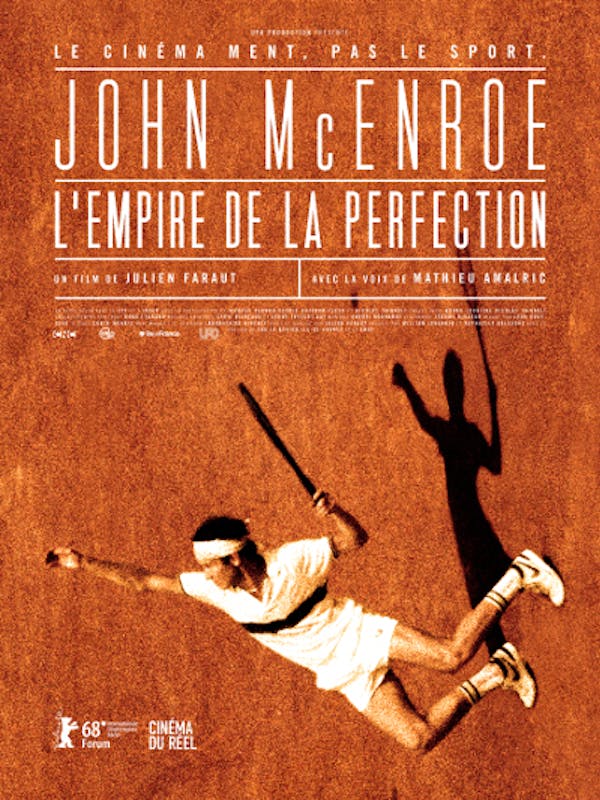Ahead of its arrival in cinemas 11 July, a preview of “John McEnroe: In the Realm of Perfection” will be screened today, Thursday 7 June, here at Roland Garros, at the Place des Mousquetaires. We spoke to the film’s director, Julien Faraut.
McEnroe sometimes "stopped playing"
The film "John McEnroe: In the Realm of Perfection" will be screened today, Thursday 7 June, after the women’s semi-finals.

Your film is original, and impossible to place in any one category. What is it about?
"I’m in charge of the sports film archives at INSEP (the French National Institute of Sport and Physical Education) and I wanted to create a record of the lengthy collaboration between the institute and the French Tennis Federation. The collaboration started with Gil de Kermadec, who was one of the first national coaching directors of any sport. That’s how I discovered raw footage from his instructional films, which made me start thinking about the relationship between tennis and cinema. All of the footage in the film come from matches filmed between 1981 and 1985."
What do we see in this footage?
"There are close ups, often slowed down. Usually they focus on just one player. The cameras used were not the same as those used for television. A tennis match at Roland Garros is a familiar subject but, shot on 16mm film and with that grainy cinematic aspect, never before seen angles and a different way of filming, there is a sense of ambiguity – is it a real match?"
How does the film play out?
"It starts with Gil de Kermadec’s progression – how he stopped making these films in the 1960s, after realising that they weren’t working. It wasn’t tennis, because the players were cut off from everything, and they had to respect certain rules. So he decided to go and film real matches. But he never knew what he was going to film. He sometimes had to wait to see a particular gesture. That didn’t stop him getting 300 backhands from a single player!"
How did John McEnroe become the central focus of the film?
"Gil de Kermadec’s way of filming led to unexpected moments where the players interfere with the cameras. One of the cameras, for example, shot more quickly than the others and made a very annoying noise during silent rallies. McEnroe stopped playing sometimes because it bothered him, and this became one of the themes of the film. I had fun with it, because obviously the spectators wanted to see him argue and get angry – it makes for more of a show. Also, you can how mentally demanding the sport is. It’s a portrait of a perfectionist who, by definition, is never happy."
However, the instructive element that Gil de Kermadec was looking for is always there…
"Over the course of filming, there were generally three cameras. The first one is at the sidelines, facing the player at a three quarter angle for a continuous sequence shot. You can follow the player’s movements. Gil de Kermadec used this viewpoint to show the work involved in covering the court. It’s a very empathetic way of showing the player’s efforts – you can see how hard it is for them to keep up a rally. The second camera is situated in a much more normal position: the one that television cameras took later, up in the stands in line with the court. This camera was used to capture the tactical aspects. The third camera was set up in a place that Gil created: the pits, which are still used by photographers today. The pits are unique – no other tournament has this view. There, on the ground, you can see the balls’ trajectories really well, and their effects and angles. It really annoyed McEnroe, he tried to stop the photographers from being able to use them."
 ROLAND-GARROS
18 May - 7 June 2026
ROLAND-GARROS
18 May - 7 June 2026

